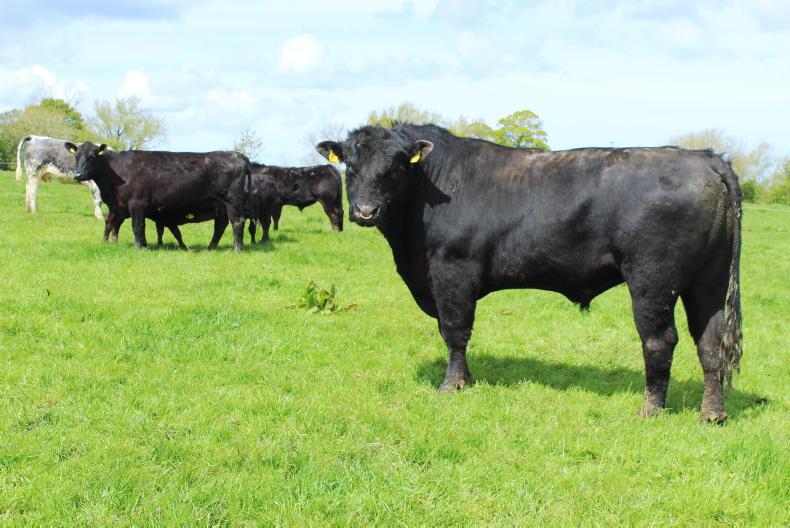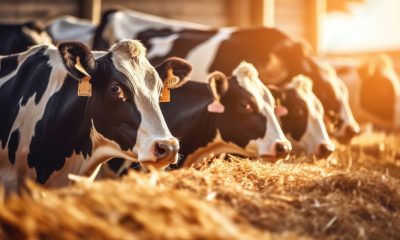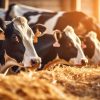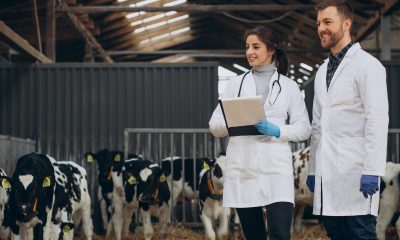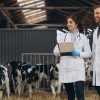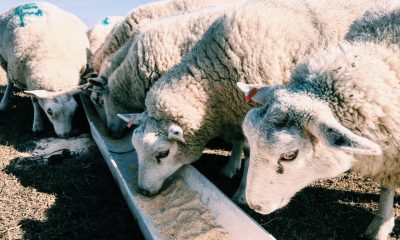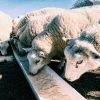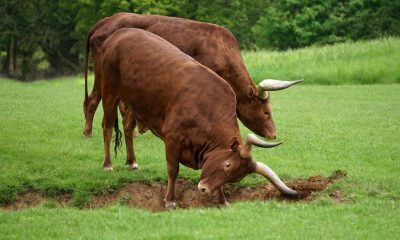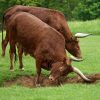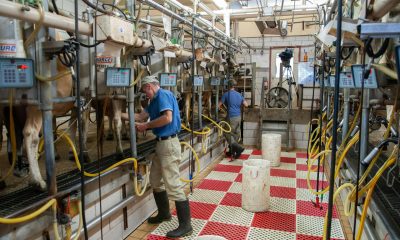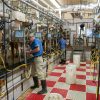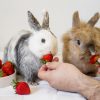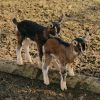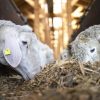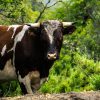Cattle
Repeat Breeding Syndrome in dairy cattle
A balance between productivity and reproductivity is key for a dairy farm’s healthy and profitable function. Cows require consistent cycles of conception and calving to start effective lactation, an important factor in the cow’s reproductive life. Thus a healthy reproductive pattern in the herd is essential for the profitability of the dairy enterprise.
One of the main challenges is Repeat Breeding Syndrome ( RBS) which is a predicament to both the farmer and the clinician.
What is Repeat breeding syndrome?
Repeat breeding syndrome is defined as the cow’s inability to conceive even after three or more regularly spaced services in the absence of any detectable clinical abnormalities. Repeat breeding cattle cause huge economic loss to a dairy farm. A repeat breeder cow has a normal oestrous cycle, no abnormal vaginal discharge is free from palpable abnormality, has calved at least once, is less than ten years old but still doesn’t conceive even after three or more attempts.
Cows with repeat breeding syndrome are classified into two main groups- The early repeats and the late repeats. The early repeats are those cows that come into heat 17-24 days after AI and have a shorter luteal function, while the latter come into heat after 25 days and have a longer luteal function.
What causes Repeat breeding syndrome?
Many factors lead to Repeat Breeding syndrome in dairy cattle, but all these factors come down to the failure of fertilization or embryonic death. Still, these primary factors must be acknowledged for understanding and diagnosis.
Maternal age: Various studies have shown that the maternal age of cattle has a negative influence on fertility; consequently there are reports of a higher percentage of repeat breeders in the older age class. This can be attributed to the changes in the hypothalamus and pituitary hormonal levels and low oocyte viability. All these factors lead to a decrease in fertility, a typical characteristic of repeat breeders.
Genetic factors: Each cow inherits its parent’s genes and genetic traits. Thus any chromosomal or genetic abnormality in the parent’s genes can compromise fertility. This compromise can also occur due to defects during the differentiation process.
Uterine infections: The uterine conditions help in the embryo’s healthy development. Thus any defect or infection in the uterine environment can cause embryo death which causes Repeat breeding syndrome in cattle. These defects in the uterine environment can be caused by the ageing dam, hormonal imbalances and differences in the ambient temperature.
Anatomical defects of the genital tract: In cows, oocyte growth is assisted by a healthy reproductive tract environment. A healthy reproductive tract also helps in sperm transport, fertilization and implantation, while the uterus helps in embryonic development. A balance between hormones helps in this process, and any defects in these areas can harm the reproductive cycle.
Hormonal dysfunction: As mentioned above, a successful reproductive process occurs when there is an effective balance and communication between different hormones. The loss of this communication can result in infertility. These hormonal dysfunctions can cause cases of anovulation (failing to ovulate) and delayed ovulation.
Effect of nutrition: The importance of nutrition in any vital biological process is undisputed. The variation in the qualitative and quantitative supply of nutrients to the cows can affect fertility. Studies have proved that nutritional deficiency and increment of services per cow is related. This is because the decrease in food intake and body weight causes endocrine imbalances that affect fertility. Also, these imbalances can affect other biological functions of cattle.
Artificial insemination: Artificial insemination is a process that requires a highly skilled technician. This is because a million things can go wrong in the process. Any semen collection, preparation, storage, or insemination mistake may cause repeat breeding syndrome. Due to these numerous risk factors, Artificial insemination has a higher chance of creating repeat breeders, supported by many studies.
How is Repeat breeding syndrome Diagnosed?
The first step to treat repeat breeding syndrome is an intensive diagnosis. The cause of repeat breeding is hard to find because the cow might not show any abnormalities, but treatment can only be given after finding the root cause. Many methods can be used for diagnosis.
External inspection and vaginal evaluation: This method can detect congenital or acquired anatomical defects. They include any deformations, injuries or tumours present in the tract. In this method, a skilled clinician can evaluate the functionality of the vaginal tract using hands by analyzing the pressure exerted by different structures. This helps the clinician to detect any adhesions, abnormalities or defects in the tract.
Rectal palpation: It is one of the most commonly used and economical methods which can be used to detect repeat breeding syndrome. In this method, plastic gloves are lubricated and involved in palpating uterine horns to detect the foetal vesicle, foetal wall and the embryo itself.
Ultrasonography: Diagnostic ultrasonography is a powerful tool that can be used to evaluate the reproductive tract of cattle. Ultrasound imaging technology provides non-invasive access to the internal reproductive organs. This technology helps in the diagnosis of repeat breeding syndrome by detection of defects in the reproductive environment.
There are many other diagnostic methods like functional hormonal tests, oviductal patency (detection of permeability of oviduct), endometrial cytology and uterine bacterial culture etc. The problem with these methods is their practicality and economic viability.
How to treat Repeat breeding syndrome?
After proper diagnosis, effective treatment must be provided to reduce the negative effects of repeat breeding on the farm. These treatments may vary depending on the root cause of the repeat breeding syndrome.
Nutritional treatments: Since deficiency of nutrients can be an underlying cause of repeat breeding, adequate nutrient supplements can be used to treat the cattle. For example, diets containing a high concentration of inorganic iodine from 8-12 days before the estrus improve the stimulation of the pituitary gland and can reduce repeat breeding syndrome.
Assisted reproduction techniques: One of the causes of repeat breeding syndrome is the abnormal implantation and transport of gametes associated with endometrial defects. This can be solved by using assisted reproduction techniques such as in vitro production of embryos or intraperitoneal insemination.
Intrauterine treatments: Any defect of the reproductive tract can be overlooked by a clinician to provide adequate treatment. They can study the bacteriology and histology of the uterus and conclude. The most commonly suggested treatments are antimicrobial treatments (chloramphenicol, gentamicin, enrofloxacin, tetracycline, or nitrofurantoin), which have improved the reproductive indexes.
Hormonal treatments: Hormonal treatments can also be used to treat repeat breeders. Generally, progesterone is used alone or combined with other substances at different times of the oestrous cycle to protect pregnancy and improve the maternal recognition of pregnancy. Some cases of repeat breeding syndrome are caused by gonadotrophin release failure. The use of GnRH ( Gonadotrophin releasing hormones) around the insemination time aims to accelerate and ensure ovulation, acting directly on the pituitary, stimulating the secretion and release of gonadotrophins.



